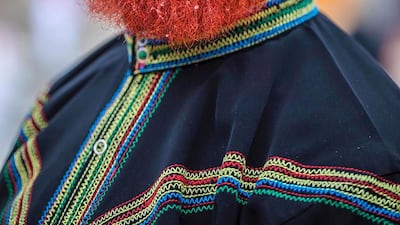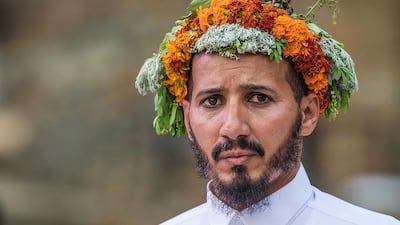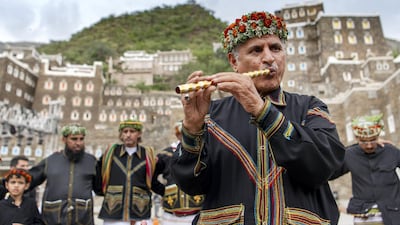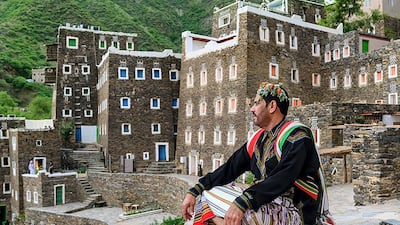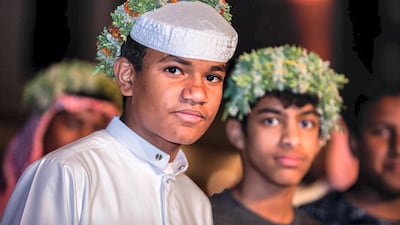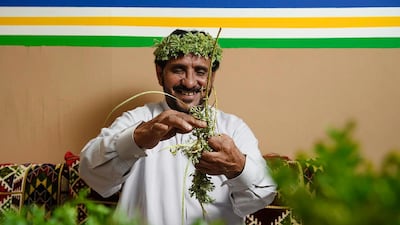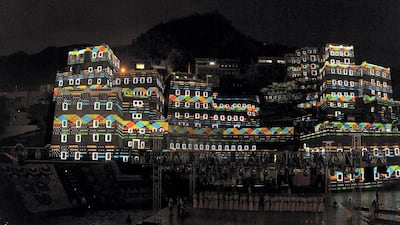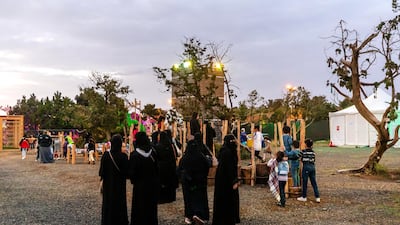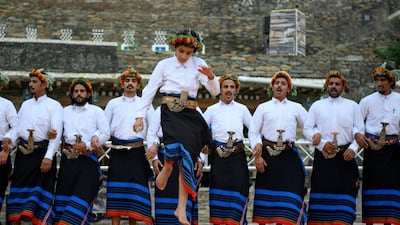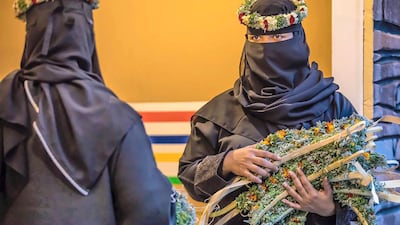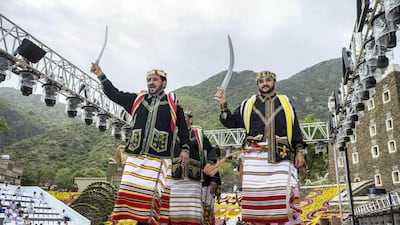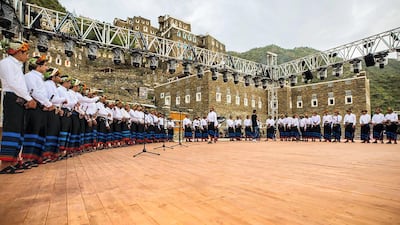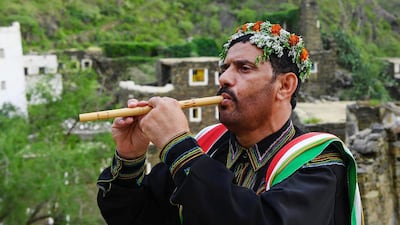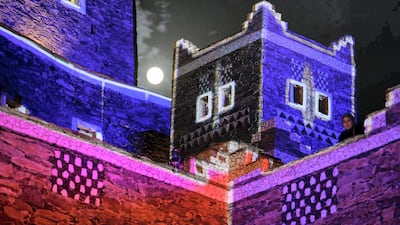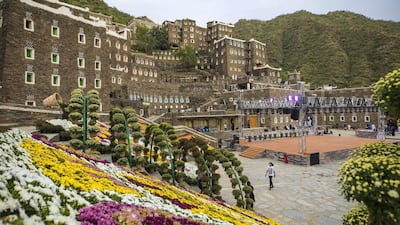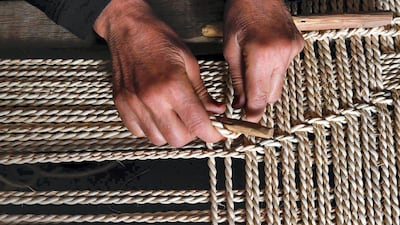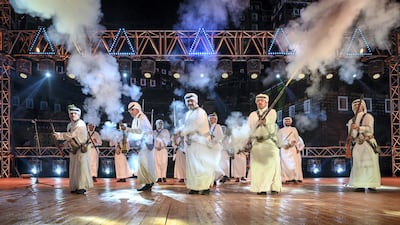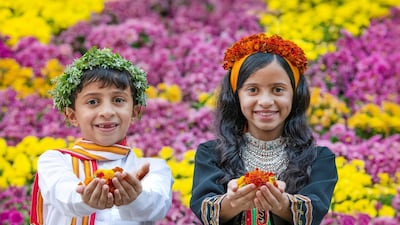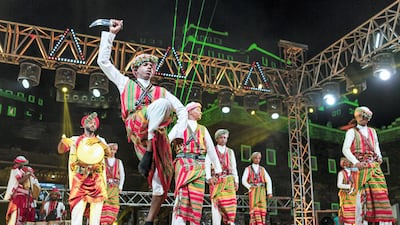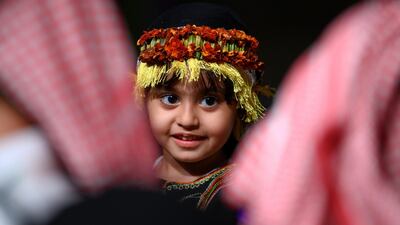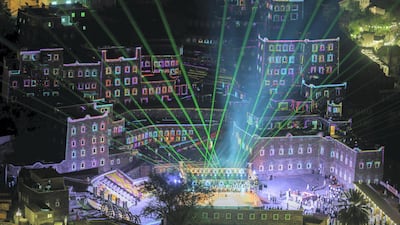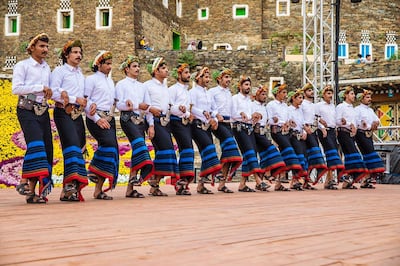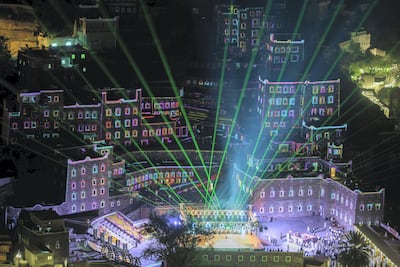Rijal Almaa is an ancient, remote village in the Asir region in southern Saudi Arabia that once served as a vital trading point between Yemen, Makkah and the Levant by way of the Red Sea. But today, it is a heritage site and budding tourist draw.
When we visit, we meet a group of young boys and older men all donning carefully arranged crowns made of vibrant local flowers and grass.
They smile as cameras and phones capture their floral garlands from all angles. Nearby, several women seated on the ground weave marigolds, jasmine and basil into the charming headpieces that are to be given to both locals and tourists. This is the world's first Flower Man Festival.
The celebration, run by the Saudi Ministry of Culture, celebrates the traditional dress of the Qahtani tribe from Habala, a remote mountainous town near the Saudi-Yemen border. They are otherwise known as Saudi Arabia's "Flower Men", due to their colourful headpieces. These are worn for their aesthetics and what the tribe believes is their health-giving properties.
Today, the men uphold their traditions by wearing the garlands in their hair while working as drivers, soldiers, farmers, and in the tourism industry.
"Asir", which means "difficult" in Arabic, describes not only the uneasy terrain in the area, characterised by arduous and uneven cliffs, but also the trials of the Qahtani tribe.
Asir is rich and diverse; the flower men's home of Habala is an hour's drive from Abha, the capital of the region, and from the picturesque Rijal Alma.
The Habala village was established during the Ottoman Empire when inhabitants tried to flee from the Turks around 350 years ago. Asir then became part of the House of Saud and incorporated into the Saudi nation in 1932. The region was given easier access to the rest of Saudi Arabia in the 1990s through a government-built cable car.
Regarded as one of the oldest social formations in the Arabian Peninsula, the Qahtanis came to be known as Flower men because of the traditional headdresses. The crowns are made from a variety of flowers and herbs, which vary depending on the occasion: some are worn for public and religious events, while others are worn for beautifying and medicinal purposes.
Rijal Almaa is a picturesque village, not only because of its setting, but also its architecture. It's home to about 60 palaces built from natural clay, stone and wood.
And as part of the Flower Men festival, Rijal Almaa's old stone buildings light up at night and an elaborate video-mapping performance is projected on to them. Local families and visitors gather in an amphitheatre-style setting to watch in awe as vibrant, fast moving and intricately coloured patterns reverberate to music across the ancient stone buildings. These are the same colours local woman use to paint their houses.
The display also includes images of farmers tending to animals, and land, referencing how the inhabitants of Asir live on the small-scale farming of wheat, coffee and fruit.
Onlookers are spellbound and one immediately senses a moment of social change. "It’s the first time that the locals are viewing video-mapping in Rijal Almaa," says Ahmad Nabelsi, the producer of the Flower Man festival. "It’s never been done before here and many people have never seen such a performance like this."
While the high-tech sight of the video-mapping mesmerises visitors, so too do the many stands of local craftsmen that line the street. Here, women make perfume and bokhur – Arabic incense – from local materials and men create ceramic pots and vases. There's a stand that sells elaborately decorated abayas and robes; others have Arabic sweets and coffee.
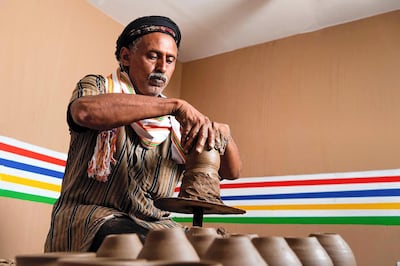
The festivities – which run until Saturday, August 31 and include an open-air museum, live folk performances, art and poetry nights and a heritage market – aim to offer an insight into the history and heritage of the Flower Men.
Recently, the Saudi Commission for Tourism and Antiquities started, alongside partners from the public and private sectors, a rehabilitation project for the Rijal Almaa village.
In 1985, a heritage museum was established by the inhabitants in a bid to uphold their regional traditions, with one of the forts serving as the museum headquarters. In 2017, Rijal Almaa won the Prince Sultan bin Salman prize for Urban Heritage.
“The Flower Men form a unique and precious cultural tradition that is hundreds of years old,” says Abdulkarim Alhumaid, the Ministry of Culture’s spokesman. “At the Ministry of Culture we’re making sure that Saudi’s cultural traditions are protected and nurtured for the benefit of generations to come.”
As Saudi Arabia moves forward with a range of economic and social reforms, the bolstering of the country’s tourism sector acts as a vital element in the move to open up doors to the outside world.
The Flower Men Festival is part of the Al Soudah Season, part of the 2019 Saudi Seasons initiative that aims to transform the country into a major tourist destination following the economic reforms of January that pledged to lift tourism spending in the country.
According to a recent report by the Tourism Information and Research Centre, Saudi Vision 2030 aims to increase tourism spending from 104 billion Saudi rials (Dh102bn) to 174bn rials by 2020. It also aims to increase the number of festivals and events from 300 to 500 in the same time.
It appears the wheels of change are starting to turn, with total local tourism expenditure up by 2.9 per cent to 8.9bn rials for the January-February period this year compared to the same months in 2018.
In May, Saudi Arabia’s cabinet approved electronic visas for foreign visitors who are attending concerts and sport events; tourist visas are soon to follow.
“Al-Soudah Season also helps create jobs for Saudi youth, further developing employment opportunities in the tourism sector,” says Noor Yamani, Al Soudah Season’s head of communications and marketing.
The festival also gives investors in the tourism sector options to expand their investments in hospitality and entertainment.
As the local men dance on stage to the traditional music before a captivated crowd, the Flower Men Festival provides the wider world a glimpse into Saudi Arabia’s once obscured past. There is something magical about this moment, and of being lucky enough to witness such a festival in the pristine old town of Rijal Almaa, before the inevitable rise of tourism.
The new tourist visas symbolise change as the kingdom opens its arms to the world. As Mr Alhumaid says: “Our vision is to make arts, heritage and culture accessible to all and every part of our everyday lives. As a result, on the world stage Saudi will become better understood as we open up and share our rich cultural traditions.”
